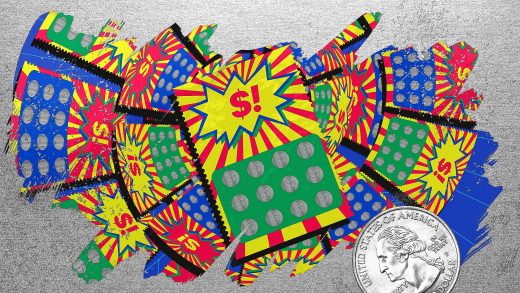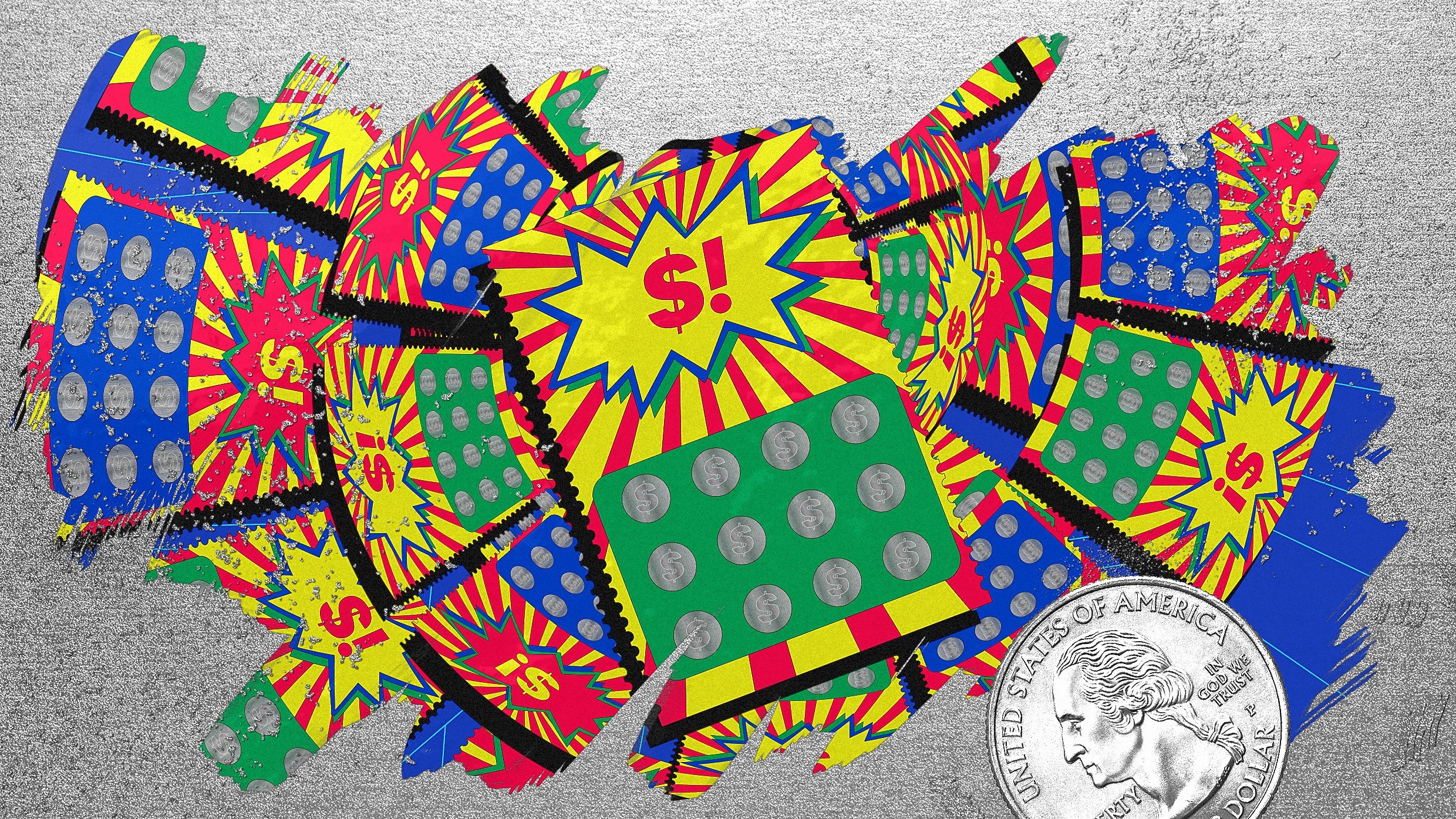Inside the dazzling, $113 billion world of scratch-off lottery tickets
$1.58 billion. That’s the unfathomably large sum that a Florida resident won last month in the largest Mega Millions jackpot in U.S. history. Just a few weeks ago, they marked five numbers on a seemingly ordinary piece of paper. Now, they belong in the three-comma club.
By some estimates, the odds of winning the Mega Millions jackpot are 1 in 302.6 million. But that doesn’t appear to deter people around the world, who spent $348.3 billion on lottery tickets in 2022. Despite the life-changing nature of the prizes, however, Mega Millions tickets don’t make up the majority of lottery sales in the U.S. Nor do Power Ball tickets, or Keno games, or any kinds of state-specific lottery games.
Nearly half of that sum actually goes towards scratch tickets—those extravagant instant lottery cards that line the check-out booths of your local 7-Eleven or newsstand. That’s $113.7 billion spent on highly designed cardboard games that use color-shifting inks, patented printing processes—and a heavy dose of behavioral psychology—to convince you to buy a ticket, and another, and another.
In the U.S., most scratch cards are made by just three companies: Scientific Games, Pollard Banknote, and IGT. Scientific Games is the only company headquartered in the U.S. (the other two are Canadian and Italian, respectively) and the world’s largest producer of instant scratch games, supplying 130 lotteries in 50 countries. Perhaps unsurprisingly, it’s also the one that launched the U.S.’s first instant scratch game almost five decades ago, but more on that later.
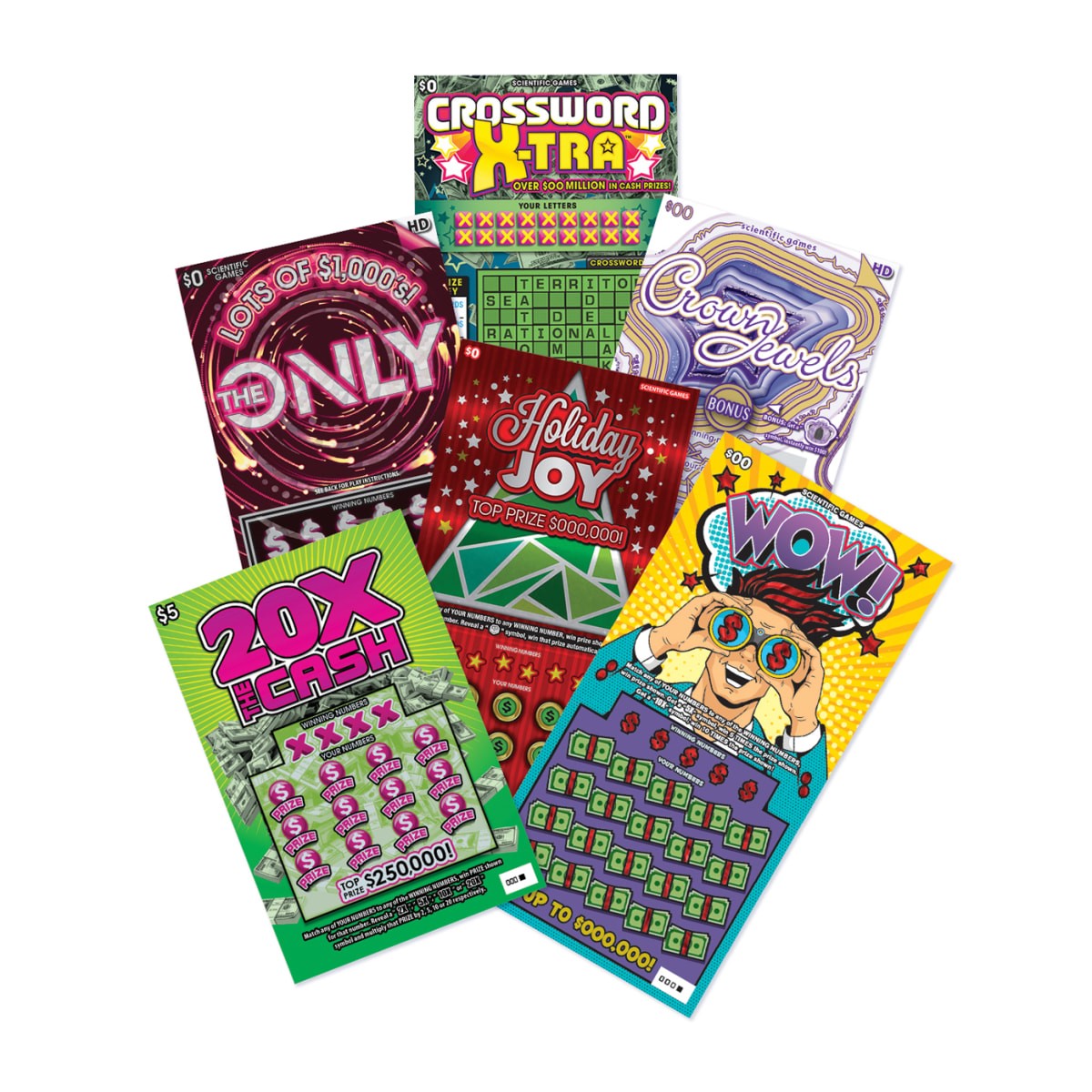
Today, Scientific Games produces up to a whopping 53 billion tickets a year, around the world. The company has manufacturing facilities around the globe, but its largest is a 365,000 square foot production facility outside of Atlanta. Each of the four roll presses at the Atlanta facility spans—I’ll pause for effect—the size of a football field and is split into various units. Tickets are printed onto gigantic rolls that measure 68 inches in diameter and weigh 3,000 pounds each. If you were to unroll one of them, it would go on for 6 miles. Depending on the size of the order (South Dakota will order fewer scratch tickets than California, for example) the printing process can take anywhere from 45 minutes to 10 days.
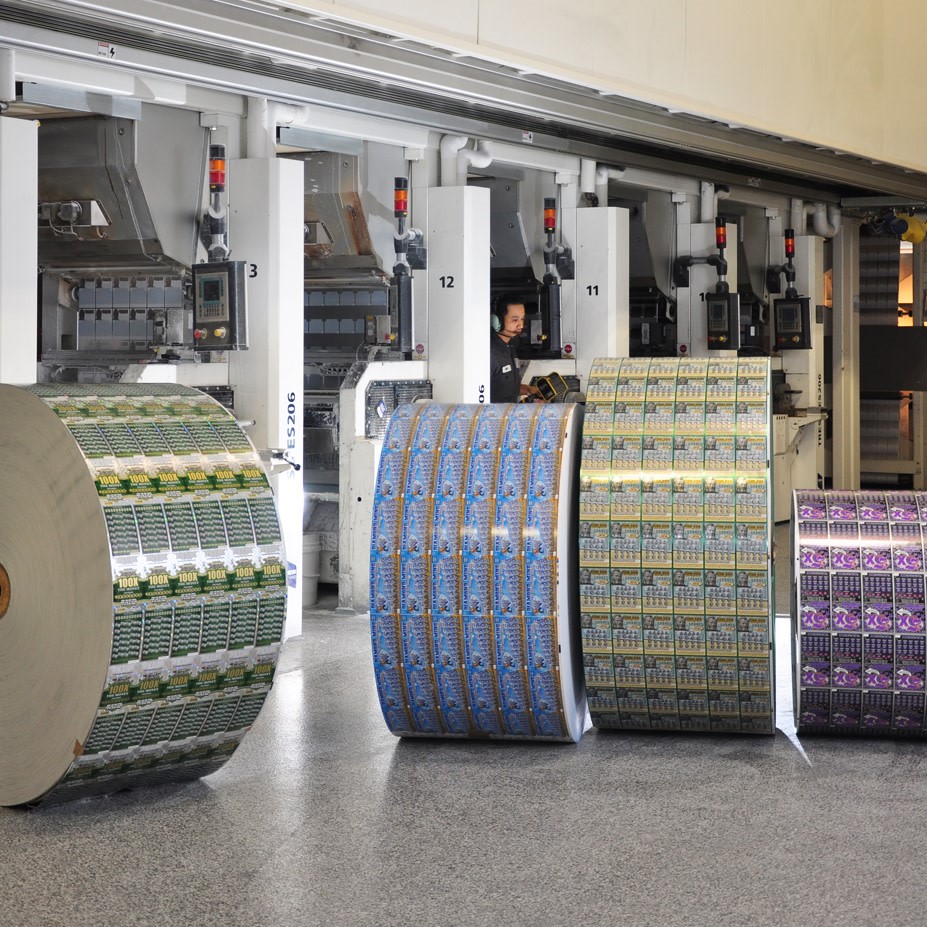
But printing is only one part of making a scratch off ticket. Before that, the team has to develop those games. On average, Scientific Games designs up to 3,000 new games every year and across the globe. Some games, like “Loose Change” and “7, 11, 21” are trademarked staples that have been around for years, but to keep players coming back for more, the team has to keep churning out new gameplays, new designs, new finishes, new themes.
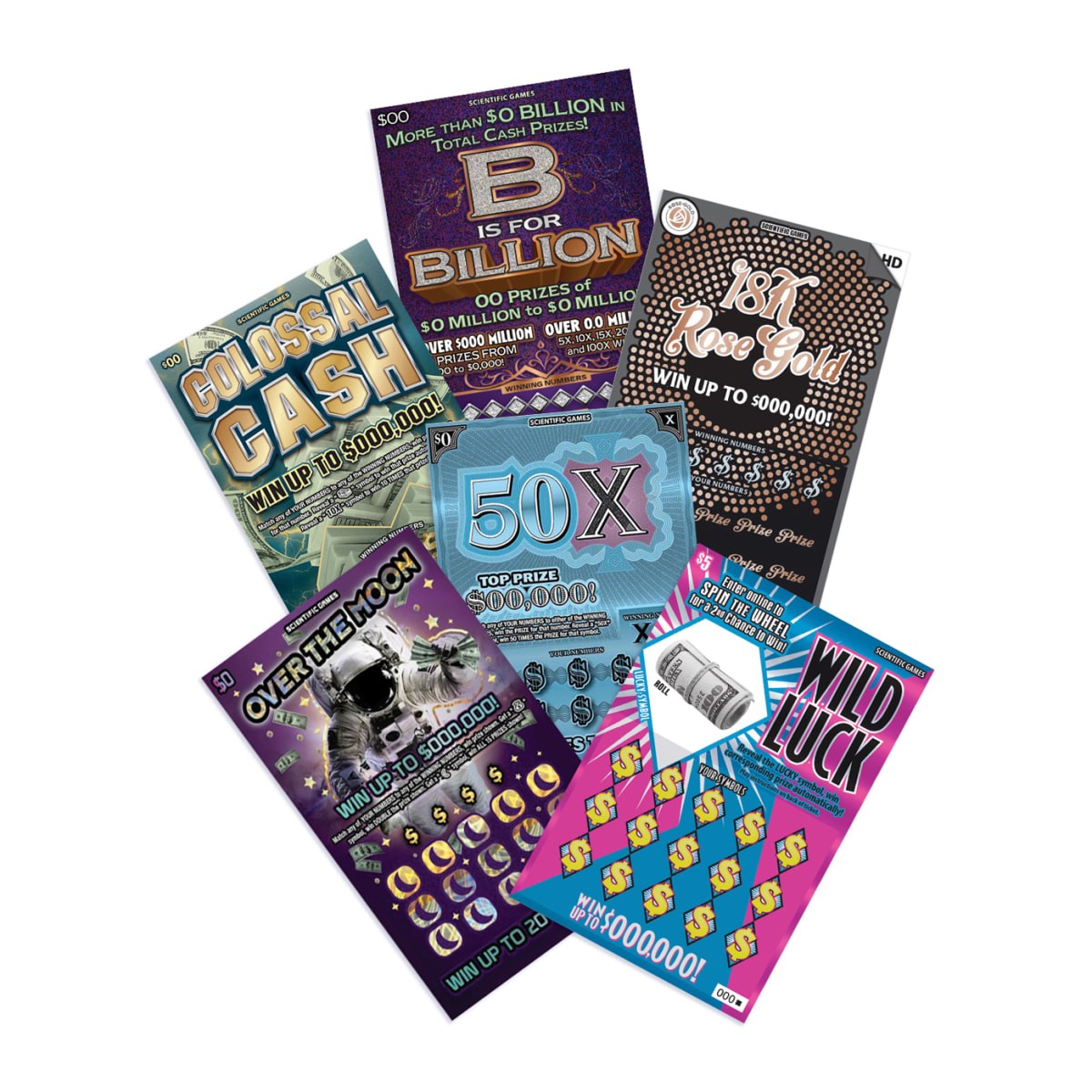
Since launching in 1973, Scientific Games has racked up 400 patents, 275 of which are directly related to instant game design, security, production, and distribution. When designing a game, the team has to communicate the exact value proposition and the prize structure as clearly as possible. “That’s the ultimate goal for players: I just want to win money,’’ says Danielle Hodges, the company’s director of global instant product innovation and development.
This kind of information is key because scratch-off tickets come in all kinds of forms. In 1974, a scratch card cost $1; today, you can spend $5, $30, $50, and even $100 on a single scratch card. The higher the value, the more likely a special coating will be used—think sparkling finishes applied with a hot foil, gold ink, or even holographic patterns that give the illusion of motion. “It’s imperative to really package up those high tier prizes in a luxury package, similar to any other consumer purchase that you make,” says Hodges.
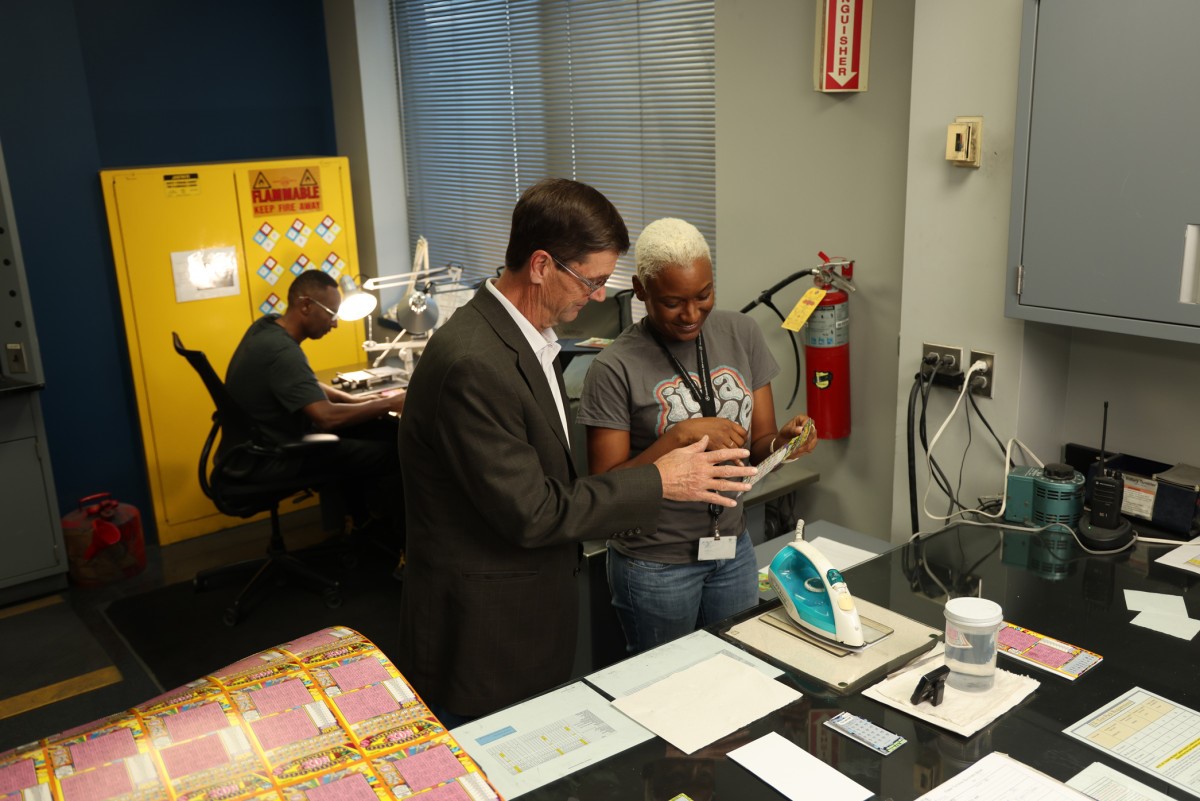
It’s also imperative to ensure that tickets are impossible to crack. As such, the team has to balance foolproof security with dazzling designs, which means that the product innovation team and the security team are essentially fighting over real estate the size of a postcard. An over-designed card could mean too many features to evaluate and too many to protect.
Joe Bennett, who is VP of Instant Game Production at Scientific Games and is responsible for instant game security, says that each ticket is like a sandwich, with “at least” 15 coatings. Some of these are various color coatings, others are there to prevent a ticket retailer from guessing which ticket is a winner by shining a light or exposing it to chemicals like ammonia or ethanol. “Retailers are going to try to attack that ticket in some way to find out if it wins or loses, and if they can do that without damaging the ticket, they’ll keep the winner,” says Bennett.
That Scientific Games has built out such robust infrastructure around the production of its instant scratch games isn’t entirely surprising, but it wasn’t always like this. Massachusetts State Lottery introduced the first instant scratch ticket in 1974. Designed by Scientific Games, it was printed on a simple white piece of cardboard. No glossy finishes, no gold inks—just five foil-lined starburst shapes hiding the numbers, a bright yellow graphic at the top, and the words “THE INSTANT GAME” displayed in a font that looks a lot like a vintage marquee sign.
It’s safe to assume that the evolution of scratch card design highly correlates with the evolution of printing processes and material innovations, but for Jonathan Cohen, whose book For a Dollar and a Dream delves into the long and winding history of America’s obsession with the lottery, the evolution of ticket design also reflects how far the industry has come. “The scale was smaller then, you just weren’t printing as many tickets as you are now,” he says.
Indeed, wannabe gamblers had pretty slim pickings in the 1970s, with only one type of scratch-off ticket on sale at any given time. In the case of the Massachusetts State Lottery, that ticket promised instant wins of up to $10,000, but there was no grand prize per se. Instead, Cohen tells me a winning ticket was like an entry into the wider lottery draw: “You would show up and they would pull names out of a hat to give out the final prize.”
This kind of trick helped to build buzz at a time when lotteries were still new. In his book, Cohen explains that Scientific Games’s co-founder, John Koza, who held a PhD in computer science, saw scratch-off tickets as a promotional tool and a way to drive lottery sales. “The appeal is, and has always been, the promise of instant gratification,” Cohen told me.
The allure of instant gratification is a massive revenue generator, and the lottery industry is quick to provide figures around its contributions to beneficiary programs. In the fiscal year of 2022, an estimated $114.9 billion went towards programs like education, health and welfare, and the environment, though study upon study has found that those who frequently play the lottery disproportionately fall in the low-income category and stores that sell lottery tickets are often clustered in lower-income neighborhoods. A game’s design, while a marvelous piece of visual entertainment, is also its most important piece of marketing. The question is: who is it marketing to?
From the very beginning, scratch tickets have provided gamblers with the illusion of control, and game designers know how to capitalize on this feeling by always leaving gamblers wanting more. Just imagine it: You’re holding a scratch card that could win you $500,000, and all you have to do is scratch off a bunch of numbers and match them to a 3 or a 13. You grab a coin and get to work, and then a 3 slowly appears under the weight of the metal. Except it’s not a 3. It’s an 8, or a 13, or a 31. They look a lot like the winning numbers, but they’re not. Cohen details in his book that Daniel Bower, Scientific Games’s second co-founder, called these “heart stoppers,” because they give players a sense of what it feels like to win so they can keep chasing that feeling until they do win.
The strategy worked from the very start. According to Cohen’s book, in the first 10 weeks after Massachusetts launched the first game, the state sold an average of 1.7 million tickets per week, or double the sales of its weekly, raffle-like lottery. The news quickly rippled across the country and by the end of 1976, most state lotteries had added instant tickets to their roster of lottery games.
Today’s cards may look more glamorous than they once did, but like all games of chance, they’re grounded in smoke and mirrors. Their mischievously clever and whimsical design makes gambling feel a little more game-like, so you can play again, again, and again.
(16)

